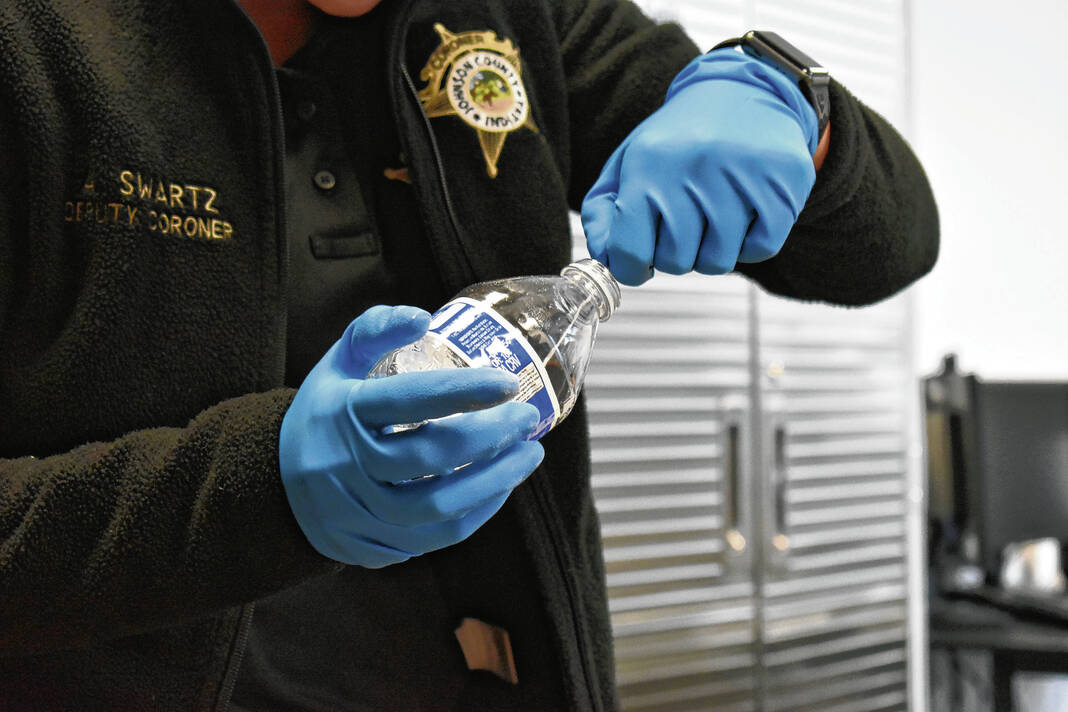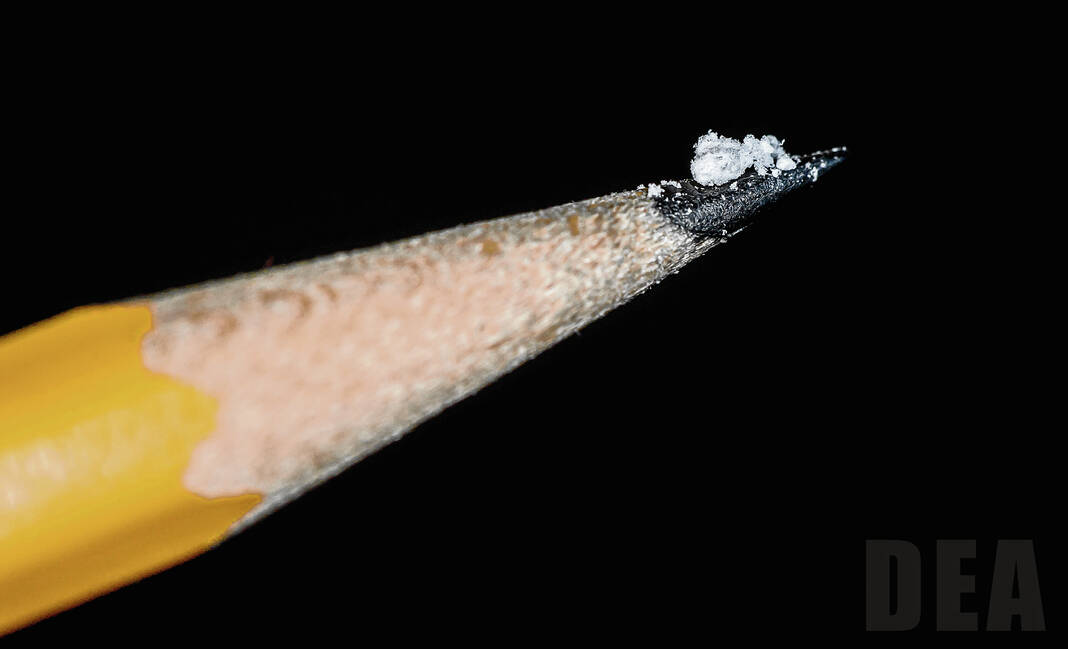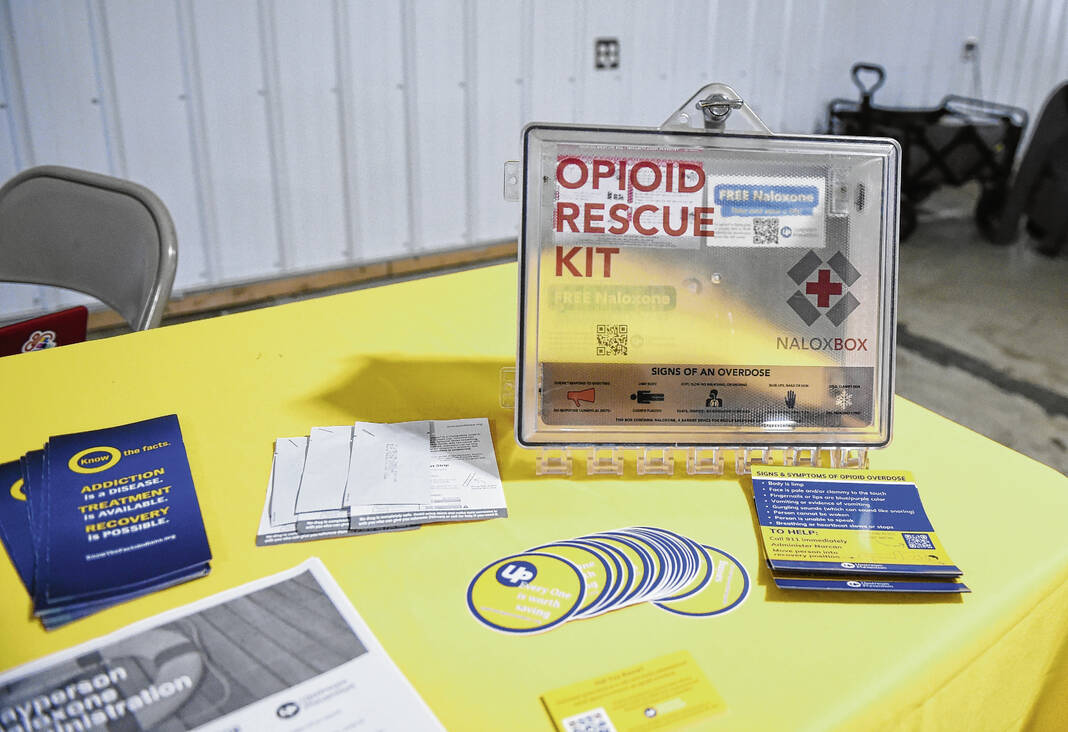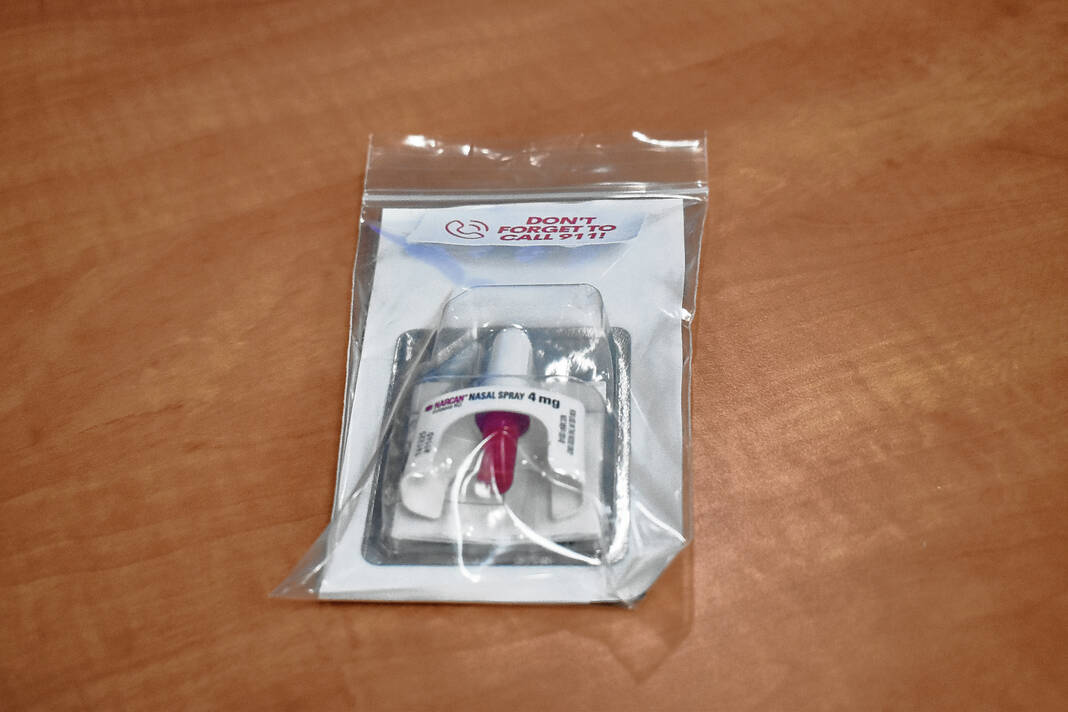Johnson County saw a significant drop in overdose deaths in 2023, but officials say this doesn’t mean the problem is going away.
There were 28 overdose deaths recorded in 2023, primarily from fentanyl. This is down from 40 in 2022 and 45 in 2021, said Mike Pruitt, county coroner.
The numbers reported by the coroner’s office only apply to people who died in Johnson County, and do not take into county residents who may have died from an overdose in a hospital outside the county, he said.

“We don’t have that number for us to work with,” Pruitt said. “I don’t think it substantially changes the numbers that much, but we’ve seen a drastic change in the number of deaths.”
When the Johnson County Coroner’s Office is called to investigate possible overdose deaths, there are several factors they take into account. Among them are whether drugs or paraphernalia are found at the scene, whether the person has a history of drug use and whether there was naloxone, an opioid overdose reversal drug, present at the scene, Pruitt said.
“Now we can take all those and we can make assumptions, but until we get toxicology results back, we truly don’t know that was an overdose death. It takes us about three weeks to get the results back,” he said.
But when they do get the results back, about 80% of the overdoses they investigate come back positive for fentanyl. A lot of times it could be just fentanyl itself or a mixed drug interaction, he said.
Fentanyl is a synthetic opioid that is up to 50 times stronger than heroin and 100 times stronger than morphine. It is a major contributor to fatal and nonfatal overdoses in the U.S., according to the Centers for Disease Control and Prevention.
There are two types of fentanyl: pharmaceutical fentanyl and illegally made fentanyl. Most recent cases of fentanyl-related overdose are linked to illegally made fentanyl. It is often added to other drugs because of its extreme potency, which makes drugs cheaper, more powerful, more addictive and more dangerous, the CDC says.
Although there has been a reduction in deaths for 2023, it does not mean the problem has stopped. The numbers only show that fewer people are overdosing and losing their lives, Pruitt said.
Narcan a factor?
Pruitt cannot say for sure what caused the decrease, but he does consider the expanded availability of naloxone, commonly referred to by its brand name Narcan, as a factor.
“It’s more readily available for people to be treated, or to be given by a family member or friend or self-administered than it ever was before,” Pruitt said.

Pruitt also hopes that increased access to Narcan is not just prolonging someone’s addictions, he said.
Johnson County Sheriff Duane Burgess and Greenwood Police Chief Jim Ison agree that Narcan could be a factor in the drop. More deputies know how to use the drug now and see cases where they can use it to help reverse overdoses, Burgess said.
With more population in the northern third of the county, the Greenwood Police Department has seen a high number of overdose calls, including those that are fatal. But like the number of fatal overdoses county-wide, the number of calls has been going down too.
In fact, the total number of overdose calls for Greenwood Police has decreased by about half from 2022 to 2023, Ison said.
Greenwood Police responded to 116 overdose calls in 2021 and 86 in 2022. Officers responded to 42 in 2023 — a 51.2% decrease, according to data cited by Ison.
The use of Narcan by officers is also down. The opioid overdose reversal drug was used 24 times by officers in 2021, 26 times in 2022 and 17 times in 2023, Ison said.
Other factors
Increased access to mental health services could also be a factor. Some programs have gotten more aggressive in following up on cases where someone has overdosed and survived, Pruitt said. There is also more peer support for those who are suffering from drug addictions, he said.
There is also increased education among the public on the dangers of overdoses, Burgess said.
Another factor in the drop could be the prevalence of problem-solving courts in Johnson County. Along with a re-entry court, there are now drug and mental health courts to help criminals who are addicted to drugs, both Burgess and Ison said.
“We’re trying to do different things,” Burgess said. “Everybody’s thinking outside the box to try to come up with some problem-solving things to have these numbers go down.”
While incarceration numbers at the Johnson County jail have remained steady, these numbers show that what officials are doing now is helping. Officials are probably “still behind the eight ball” but are working in the right direction to get people help, Burgess said.
“We don’t want people to return to the jail, and I think that’s where you’re seeing that because there’s more involvement with people going back to the mental health, where they’re keeping track of these people when they get out of jail,” Burgess said. “We’re using every option that we have right now.”
A new cycle?
A few years ago, it was fentanyl deaths all the time. Now methamphetamine seems to be making a comeback, Burgess said.

Ison has also noticed meth becoming more prominent. There has always historically been a cycle where certain drugs run rampant before dying down and another drug takes over for a while, he said.
“I think we’re in a transition period right now where that’s happening,” Ison said.
People don’t overdose on meth at the same rate as people overdose on opioids. Meth overdoses are also harder to track because they are typically categorized as heart attacks, Ison said.
Meth is still just as dangerous as opioids though, as it can cause negative long-term health effects, he said. Heroin and fentanyl tend to cause more acute conditions, Ison said.
More work needed
Burgess would like to see the drug use go down going forward, and less fentanyl coming into the U.S., he said.
“As we continue to battle the fentanyl issue, and especially it coming from locations like China and Mexico, we’re gonna continue to see problems in that area,” Ison added.
For the last several years, it wasn’t uncommon to see several overdoses, including fatal ones, in a three-to-four-day stretch after a new shipment of fentanyl-laced drugs or “bad heroin” came into the area. When this happened, it was key for law enforcement to determine how to track it down, find who was supplying it and where they got it from, Ison said.
Narcotics detectives are still continuing to do their job, but officials need to continue to try to educate people, get people in programs and get off these “harsh drugs,” Burgess said.
Everyone is trying to be proactive and work together to solve drug issues. This includes judges, the Johnson County Prosecutor’s Office, officers and the Crisis Intervention Team, Burgess said.
“We’re doing so much so many things different from when I started in law enforcement and throughout my career right now, of having that interaction with folks even after they’re out of jail,” he said. “We’re seeing a lot of good positive changes, but we still have a lot of work to do.”
OVERDOSE SIGNS
Here are some things to look for when someone may be overdosing on opioids. Recognizing the signs can save a life:
- Small, constricted “pinpoint pupils”
- Falling asleep or losing consciousness
- Slow, weak or no breathing
- Choking or gurgling sounds
- Limp body
- Cold and/or clammy skin
- Discolored skin (especially in lips and nails)
Source: CDC
WHAT TO DO IF SOMEONE IS OVERDOSING
It can be hard to tell whether a person is high or experiencing an overdose. If unsure, treat it like an overdose as you could save a life:
- Call 911.
- Administer naloxone, if available.
- Try to keep the person awake and breathing.
- Lay the person on their side to prevent choking.
- Stay with the person until emergency assistance arrives.
Source: CDC
AT A GLANCE
NaloxBoxes
What: Upstream Prevention, with the help of Indiana Department of Health, Duke Energy Foundation and Overdose Lifeline, has installed several NaloxBoxes throughout Johnson County. The boxes are stocked with the medication naloxone, which can reverse an opioid overdose, as well as with instructions and resources for recovery.
Where to find boxes:
Bargersville
- CoffeeHouse Five, 10 Plummer Ave.
Edinburgh
- Downtown, 105 S. Holland St.
Franklin
- Johnson County Public Library branch, 401 State St.
- Johnson County Public Library services center, 49 E. Monroe St.
- Hilltop Motel, 5351 S. U.S. 31 (In lobby, on west wall)
- Quality Inn, 150 Lovers Lane (By vending machine in lobby)
- Johnson County Community Corrections, 1071 Hospital Road (Behind the receptionist desk. Public will have to ask for naloxone and information.)
- Johnson County Juvenile Detention/Probation, 1121 Hospital Road (Box is on the detention side, by the bathrooms)
- Johnson County Museum of History, 135 N. Main St. (Box is behind the receptionist’s desk)
- Johnson County Courthouse, 18 W. Jefferson St. (In the basement, left at the elevator)
- Johnson County West Annex, 86 W. Court St. (Behind where security sits, in the main entrance)
- Johnson County Adult Probation (East Annex), 101 E. Jefferson St. (Behind where the sheriff deputy/security sits. Public will have to ask for naloxone and information.)
- Franklin College, 101 Branigin Blvd. (On outer east wall of the Hamilton Library, underneath the skywalk.)
Greenwood
- Johnson County Salvation Army, 325 Market Plaza
- Johnson County Public Library – White River branch, 1664 Library Blvd.
- Disabled American Veterans Department of Indiana, 170 Airport Pkwy., Suite A
- Valle Vista Health System – Outpatient Center, 65 Airport Pkwy., Suite 106
- Valle Vista Health System Hospital – Discharge, 898 E. Main St. (Back entrance; door 3.)
Trafalgar
- Johnson County Public Library branch, 424 S. Tower St.
Whiteland
- Johnson County Public Library – Clark Pleasant branch, 350 Clearwater Blvd.
- HeavenEarth Church, 309 E. Main St.
- Breaking Bread Apostolic Church, 530 Tracy Rd.
Information: upstreamprevention.org/upstream-initiatives/naloxone or overdoselifeline.org/naloxone-boxes-and-distribution-centers











